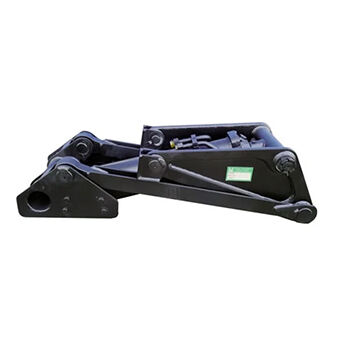Hydraulic cylinders play an integral part in many types of machinery, working to convert the energy from pressurized fluid into mechanical motion. These cylinders are used in various sectors which include construction, manufacturing transportation. When it comes to challenging workplace environments, maintaining the high quality and durability of hydraulic cylinders is necessary for their flawless performance.
The Role of Quality Control in Hydraulic Cylinders
There are strict testing and quality assurance measures take place to ensure the highest possible standard is always maintained when it comes g hydraulic cylinders. The process to excellence starts with hand-picking premium raw materials that can endure heavy pressure, high friction and severe corrosion.
Once the right raw materials are selected, only then does production begin. Production is carried out according to a series of safety and quality norms throughout the entire process, all in order for the hydraulic cylinders to comply with the conventional standards imposed by sector.
Quality Assurance Phase insights
Quality Assurance goes through a series of rigorous tests that are conducted at various steps in manufacturing. The first step is examining the raw materials to determine their tensile strength, long-lasting nature and corrosion resistance. To obtain such a dataset, only materials of that particular data set will be considered for manufacturing hydraulic cylinders.
Following, specific parts of the hydraulic cylinders are ruthlessly examined during manufacture. All the parts are checked individually for quality regulations. After the components are married together, full hydraulic cylinder testing takes place.
How To Inspect Hydraulic Cylinders Like A Pro
Here are several of the best practices manufacturers use to test their hydraulic cylinders. The standardized practices for the strength testing of the cylinder are ensuring that the cylinders should have enough ability to stand pressure as well during high temperatures. Finally, varying hydraulic temperature and pressure conditions are used to test their operational ability changes.
Ensuring that hydraulic cylinders are easy to maintain and repair is also important. With the amount of stress they are put under, it is critical to support easy mending or replacements without interfering with machine operations.
We Take a Closer Look at What Happens to an Hydraulic Cylinder During The Quality Assurance Process
The manufacturing of hydraulic cylinders is a staunch discipline in terms of following the QC matrix. These steps are the quality management of a cylinder, starting from choosing good raw material for hydraulic cylinders, applying stricts safety and engineering controls through the manufacturing process to test components that affects overall actuator performance. This is to ensure that hydraulic cylinders are of the highest quality and resilience in severe working environments.
In conclusion, the testing and quality assurance method of hydraulic cylinders play a decisive role in their reliability and functionality under extreme working conditions. These components are expected to adhere closely to a set of best practices when they are tested prior and evaluated before going on sale to manufacturers who demand cylinders that can do the job correctly. Ensuring young people have a working knowledge of these processes is vital for the future, given they will undoubtedly grow up surrounded by machinery being updated and replaced with new technology.

 EN
EN
 AR
AR
 BG
BG
 HR
HR
 CS
CS
 DA
DA
 NL
NL
 FI
FI
 FR
FR
 DE
DE
 EL
EL
 HI
HI
 IT
IT
 JA
JA
 KO
KO
 NO
NO
 PL
PL
 PT
PT
 RO
RO
 RU
RU
 ES
ES
 SV
SV
 CA
CA
 TL
TL
 IW
IW
 ID
ID
 LV
LV
 LT
LT
 SR
SR
 SK
SK
 UK
UK
 VI
VI
 HU
HU
 TH
TH
 TR
TR
 FA
FA
 MS
MS
 GA
GA
 CY
CY
 KA
KA


